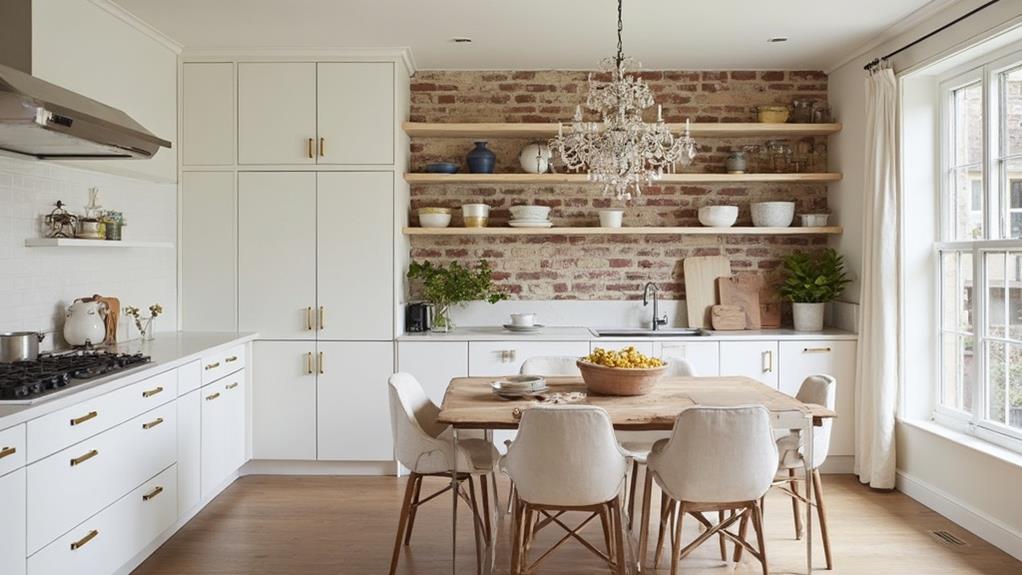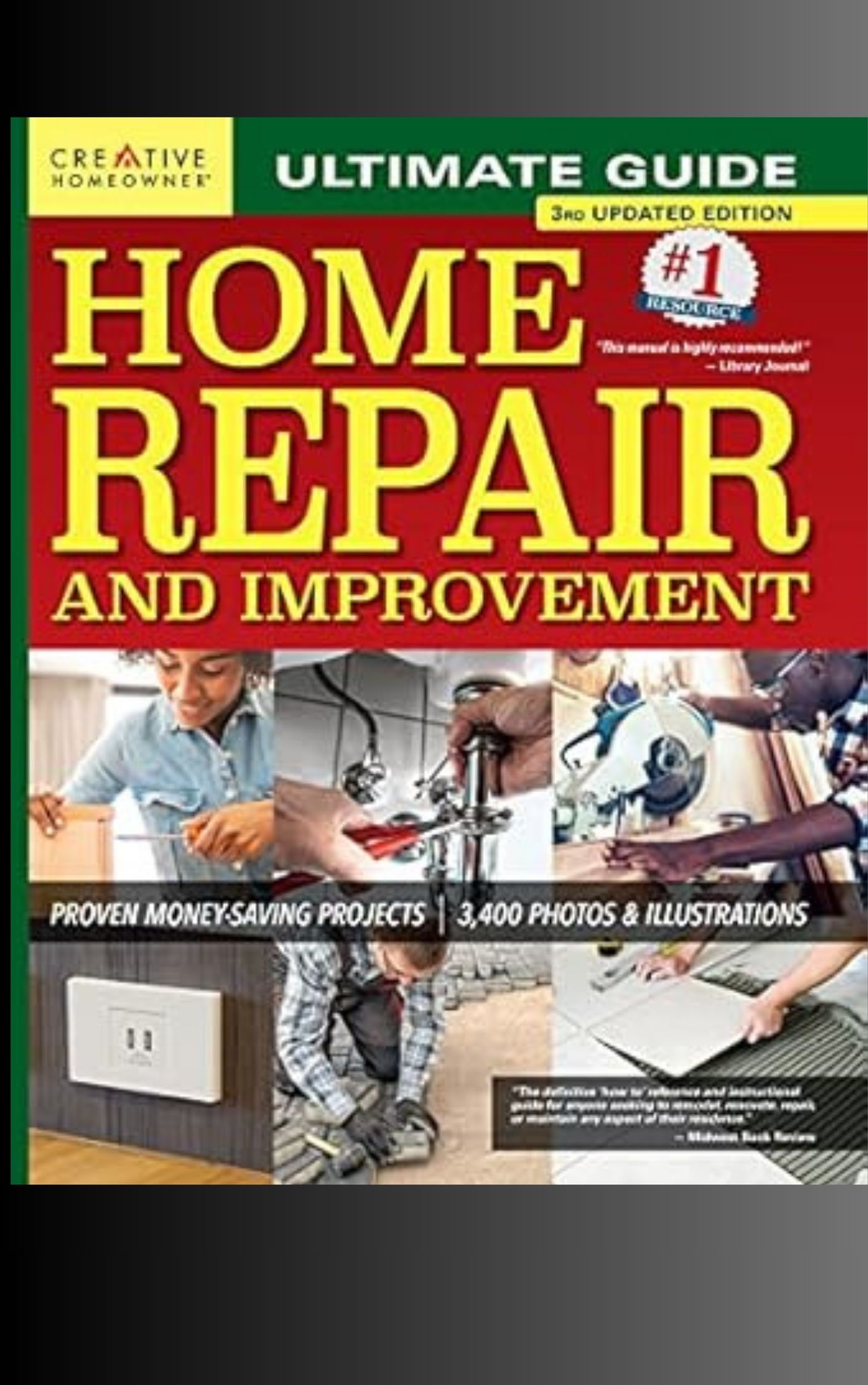Incorporating vintage elements into a modern renovation creates a unique and timeless aesthetic. Start by choosing a specific vintage era to draw inspiration from, such as Art Deco or Mid-Century Modern. Mix materials and textures, combining polished surfaces with rough finishes to add depth. Repurpose antique items creatively, like using old doors as headboards or vintage suitcases for storage. Balance old and new by establishing a neutral backdrop and carefully selecting statement pieces. Focus on one or two vintage focal points per room to avoid overwhelming the space. By thoughtfully blending vintage charm with contemporary design, you can create a cohesive and personalized living environment. The key lies in striking the perfect balance between nostalgia and modernity.
Choose Your Vintage Era
When embarking on a vintage-inspired renovation, the first crucial step is to select the specific era you wish to emulate. This decision will guide your choices in furniture, decor, and architectural elements throughout the project. Consider popular vintage eras such as Art Deco (1920s-1930s), Mid-Century Modern (1940s-1960s), or Victorian (1837-1901).
Research the characteristics of your chosen era to understand its distinct features. For example, Art Deco is known for its geometric patterns, bold colors, and luxurious materials, while Mid-Century Modern emphasizes clean lines, organic shapes, and functionality. Victorian design showcases ornate details, rich textures, and dark wood tones.
Once you've selected an era, focus on incorporating key elements that define that period. This could include specific color palettes, furniture styles, lighting fixtures, or architectural details. However, remember that the goal is to blend vintage elements with modern sensibilities, not to create a museum-like recreation. Choose aspects of the era that resonate with your personal style and complement your home's existing architecture. This approach will ensure a cohesive and timeless design that pays homage to the past while remaining relevant in the present.
Mix Materials and Textures
Building on your chosen vintage era, the next step in creating a captivating renovation is to mix materials and textures thoughtfully. This approach adds depth and visual interest to your space while honoring both vintage and modern aesthetics. Consider pairing smooth, sleek surfaces with rougher, more tactile elements to create contrast and balance.
For example, combine polished concrete floors with reclaimed wood accent walls or vintage textiles. Incorporate metal finishes like brass or copper alongside natural stone or exposed brick. Introduce plush velvet upholstery on streamlined furniture pieces to blend comfort with contemporary design. Textured wallpapers or hand-painted murals can provide a striking backdrop for minimalist decor.
When mixing materials, maintain a cohesive color palette to ensure harmony. Use vintage-inspired patterns in modern materials, such as geometric tiles or Art Deco-inspired fabrics. Experiment with layering different textures through rugs, throws, and cushions. Remember to balance hard and soft elements throughout the space. By thoughtfully combining diverse materials and textures, you can create a unique, multi-dimensional environment that seamlessly blends vintage charm with modern sophistication.
Repurpose Antique Items
In the realm of vintage-inspired renovations, repurposing antique items offers a unique opportunity to infuse character and history into modern spaces. By breathing new life into old objects, homeowners can create one-of-a-kind focal points that tell a story and add depth to their interiors.
Consider transforming antique doors into headboards or table tops, or repurposing vintage suitcases as stylish storage solutions. Old ladders can become innovative bookshelves, while retro light fixtures can add a touch of nostalgia to contemporary rooms.
Antique mirrors, with their ornate frames and weathered patina, can serve as striking wall art or be incorporated into bathroom vanities.
When repurposing antique items, it's essential to strike a balance between preservation and functionality. Maintain the item's original charm while adapting it to suit modern needs. For example, an old typewriter could become a unique lamp base, or a vintage radio cabinet could be converted into a bar cart.
Seek out flea markets, antique shops, and online marketplaces to discover hidden gems. With creativity and vision, these repurposed antiques can become conversation pieces that seamlessly blend the old with the new in your modern renovation.
Balance Old and New
Achieving harmony between vintage elements and modern design is an art form in itself. The key lies in creating a cohesive aesthetic that respects both eras while avoiding a disjointed or cluttered appearance.
Start by establishing a neutral backdrop, using clean lines and muted colors to provide a canvas for your vintage pieces. Carefully select statement antiques that complement your modern furnishings, focusing on quality over quantity.
Consider the scale and proportion of vintage items in relation to your contemporary spaces. A large antique armoire can serve as a striking focal point in a minimalist room, while smaller vintage accessories can be grouped to create visual interest without overwhelming the space.
Pay attention to textures and materials, mixing smooth modern surfaces with the patina of aged wood or metals. Use lighting strategically to highlight both old and new elements, creating a balanced ambiance. Don't be afraid to juxtapose styles; a mid-century modern chair can look stunning next to an ornate Victorian side table.
Remember that successful integration of vintage and modern design requires a thoughtful approach, where each element enhances the other to create a unique and harmonious living space.
Focus on Statement Pieces
Three key strategies can help you effectively incorporate statement pieces into your vintage-modern renovation. First, choose one or two focal points per room, such as a large antique mirror, a restored clawfoot bathtub, or a vintage chandelier. These pieces should command attention and set the tone for the space without overwhelming it.
Second, ensure your statement pieces contrast with the modern elements in the room. This juxtaposition creates visual interest and highlights both the vintage and contemporary aspects of your design. For example, pair a mid-century modern sideboard with sleek, minimalist decor, or place an ornate Victorian armchair against a backdrop of clean, white walls.
Lastly, consider the scale and proportion of your statement pieces relative to the room and other furnishings. A large vintage rug can anchor a living room, while smaller items like antique clocks or retro appliances can add character to a kitchen without dominating the space. By carefully selecting and positioning these statement pieces, you can create a harmonious blend of old and new that reflects your personal style and honors the history of your home.
Embrace Imperfections
Why settle for perfection when imperfections can add character and charm to your vintage-modern renovation? Embracing the natural wear and tear of vintage elements can create a unique and authentic atmosphere in your home. Instead of covering up scratches, dents, or patina on old furniture or architectural features, highlight these imperfections as part of the item's history and appeal.
Consider leaving exposed brick walls unfinished, showcasing their rough textures and varied colors. Repurpose weathered wood beams or floorboards, preserving their knots, grain patterns, and even nail holes. Antique mirrors with slight tarnishing or cracked edges can add an air of mystery and elegance to a modern space. Vintage light fixtures with minor dents or discoloration can serve as unique focal points in a room.
When incorporating these imperfect elements, balance is key. Pair them with sleek, modern pieces to create an interesting contrast. This juxtaposition of old and new, perfect and imperfect, will result in a visually compelling and personalized interior that tells a story of both past and present.
Frequently Asked Questions
How Do I Clean and Maintain Vintage Elements Without Damaging Them?
To clean and maintain vintage elements safely, use gentle, non-abrasive cleaners and soft cloths. Research proper techniques for specific materials. Regularly dust and inspect items for damage. Consider professional restoration for valuable or delicate pieces to ensure preservation.
Where Can I Find Authentic Vintage Pieces for My Renovation Project?
While finding authentic vintage pieces can be challenging, numerous options exist. Explore antique shops, flea markets, estate sales, and online marketplaces like Etsy or 1stDibs. Additionally, consider architectural salvage yards and specialty vintage stores for unique, period-appropriate elements.
Are There Any Safety Concerns When Incorporating Vintage Electrical Fixtures?
Yes, there are significant safety concerns with vintage electrical fixtures. Outdated wiring, insulation, and components may not meet current safety standards. It's crucial to have a licensed electrician inspect and potentially update vintage electrical elements before installation.
How Can I Ensure Vintage Elements Meet Modern Building Codes and Regulations?
In this digital age, ensuring vintage elements meet modern codes is crucial. Consult with a licensed inspector to assess compliance. Retrofit items as needed, obtain necessary permits, and document all modifications. Safety should always be the top priority when incorporating vintage pieces.
What's the Best Way to Determine the Value of Vintage Items?
To determine the value of vintage items, consult expert appraisers, research recent sales of similar pieces, utilize online valuation tools, and consider factors such as condition, rarity, provenance, and market demand. Auction houses can also provide professional assessments.
Conclusion
In the grand tapestry of home renovation, the incorporation of vintage elements into modern design becomes a delightful farce of temporal confusion. As homeowners frantically balance old and new, embracing imperfections while striving for perfection, they unwittingly create a satirical commentary on society's obsession with nostalgia. This architectural time warp, replete with repurposed antiques and carefully curated "statement pieces," serves as a poignant reminder that in the pursuit of authenticity, one often constructs an elaborate illusion of the past.

